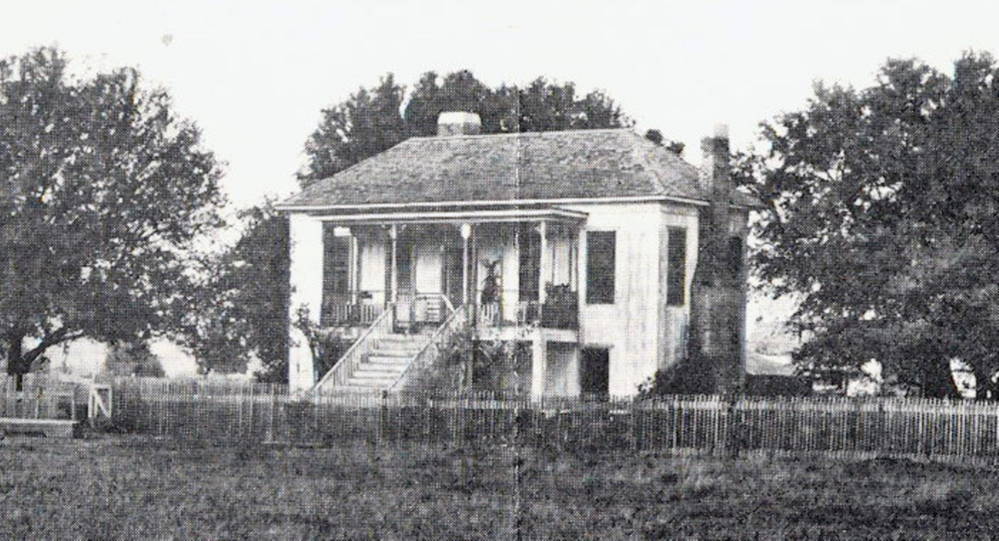
SCANLAN HOUSE
This is probably the most misunderstood house in Fort Bend County. By misunderstood, I am referring the the history of the structure, such as when it was originally built, and when and how improvements were added to the house.
The house is located on the Sienna Plantation in eastern Fort Bend County about 2 miles west of FM 521, and about 5 miles south of Arcola. [It is still standing in the year 2016]
The two story house was built on the Arcola Plantation in about 1860 when Jonathan D. Waters was owner of the plantation. The earliest photograph of the building that I have found was taken in 1908 as part of Arcola Sugar Mills Company presenting the Arcola Sugar Plantation for sale. This brochure calls the structure
RESIDENCE OF THE GENERAL SUPERINTENDENT.
Also named FOREMAN'S house.

The location of this residence has been lost to historians, even though the location is shown on the 1908 'Arcola Plantation for Sale 'advertisement. Could it be hiding in plain sight?
A. The entrance to the two story house is on the second floor.
B. There are 2 widows on each side of the second floor entrance.
C. There are two chimneys. One is on the right and the other is in the rear to the left.
D. The location of this house is on the 1908 prospectus.
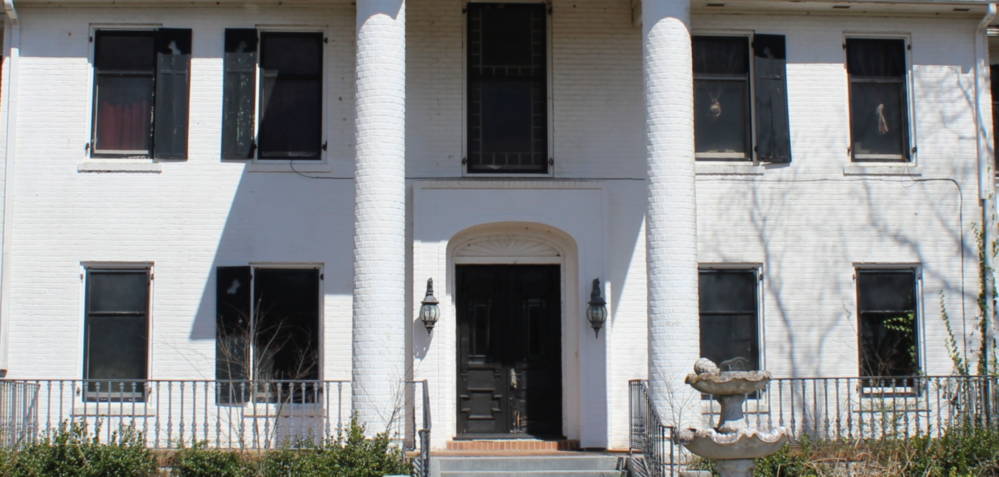
THE FRONT FACE OF THE SCANLAN HOUSE IN 2016
A. There is a door size stained glass window on the second floor in the same location and the same size as the original second story entrance.
B. There are 2 widows on each side of the second floor entrance.
C. There are two chimneys. oe is on the right and the other is in the rear to the left. [Not seen in this view]
D. The location of this house is the same as on the 1908 prospectus for RESIDENCE OF THE GENERAL SUPERINTENDENT.
I suggest the RESIDENCE OF THE GENERAL SUPERINTENDENT was modified with materials from the 1937 demolished Scanlan residence from 1917 Main at Pierce, Houston,to create the Scanlan house on the plantation.The marble front steps from 1917 Main were used as the front steps of the plantation house. This could only be accomplished if the RESIDENCE OF THE GENERAL SUPERINTENDENT was raised to the level of the top of the marble front steps. This is more than speculation, when one interviews the families that were raised on the plantation. Rufus Mauricio is the son of the late Manuela Gonzalez Mauricio and she was the daughter of Rufus Gonzalez who is buried on the plantation. All three grew up on the plantation. Rufus Mauricio is the namesake of his grandfather and confirms that his grandfather told him the house was raised while being remolded by the Scanlan sisters. A basement was added under the back of the house and a boiler was installed to feed the steam radiaters that heated the house. Cement steps lead to the house from the basement. The underside of the steps are supported by four narrow gage railroad rails. There was an abundance of these light rails left from the recent sugar production era.
EVENTS IN HOUSTON CAUSE CHANGES TO THE PLANTATION HOUSE
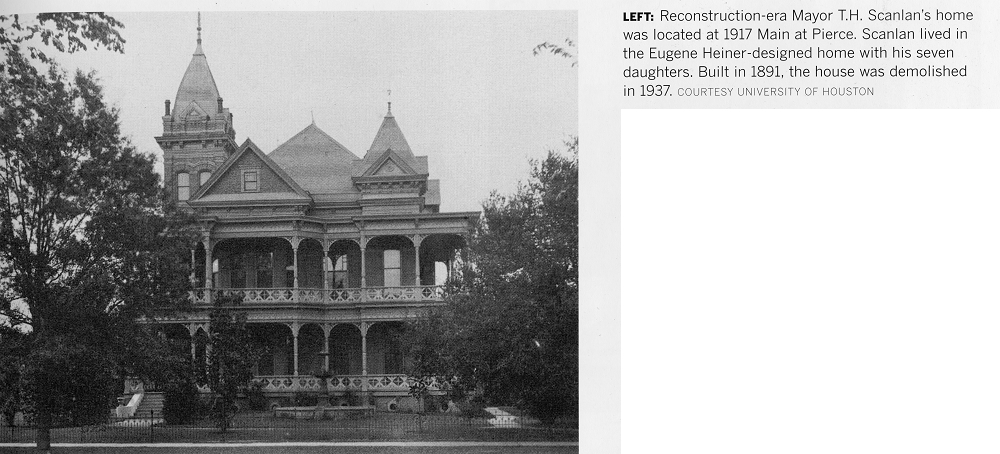
The Scanlan Oak, shown below, is also referred to as the Lawsuit Oak Tree in Houston.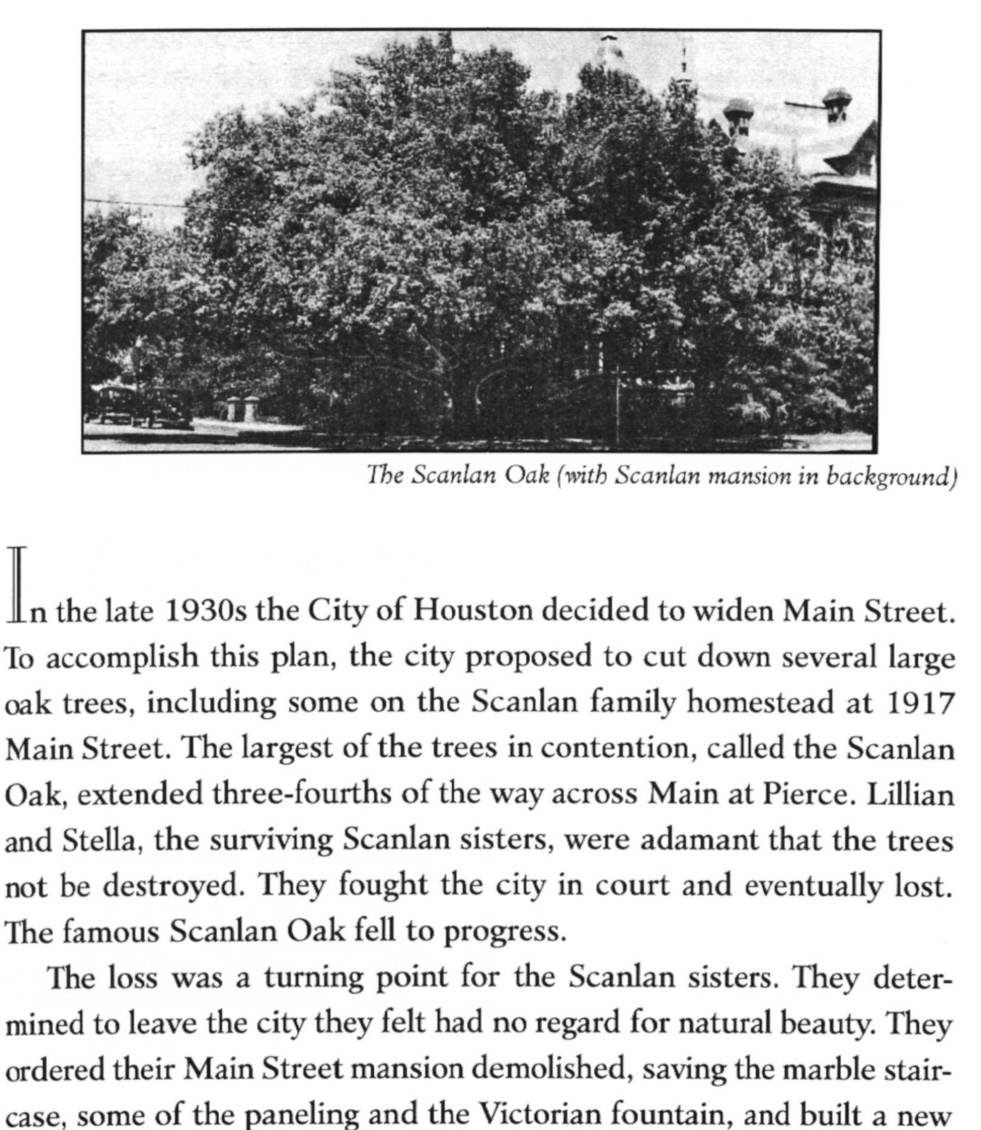
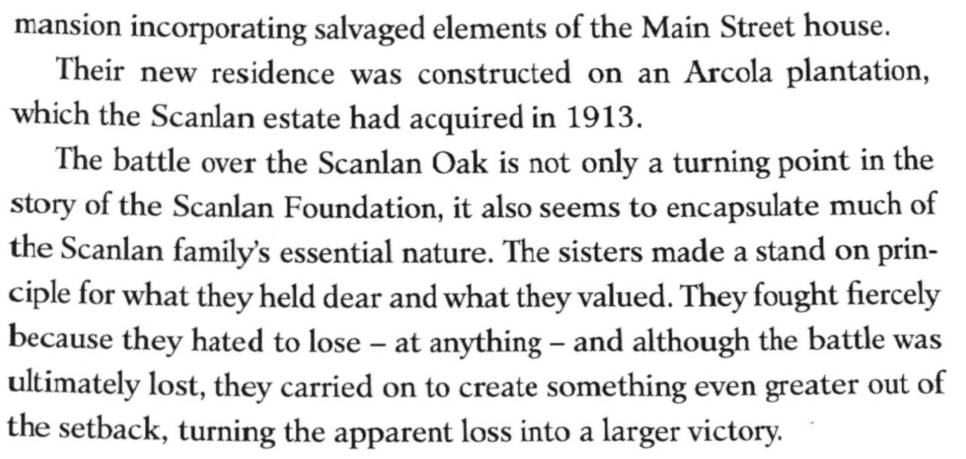
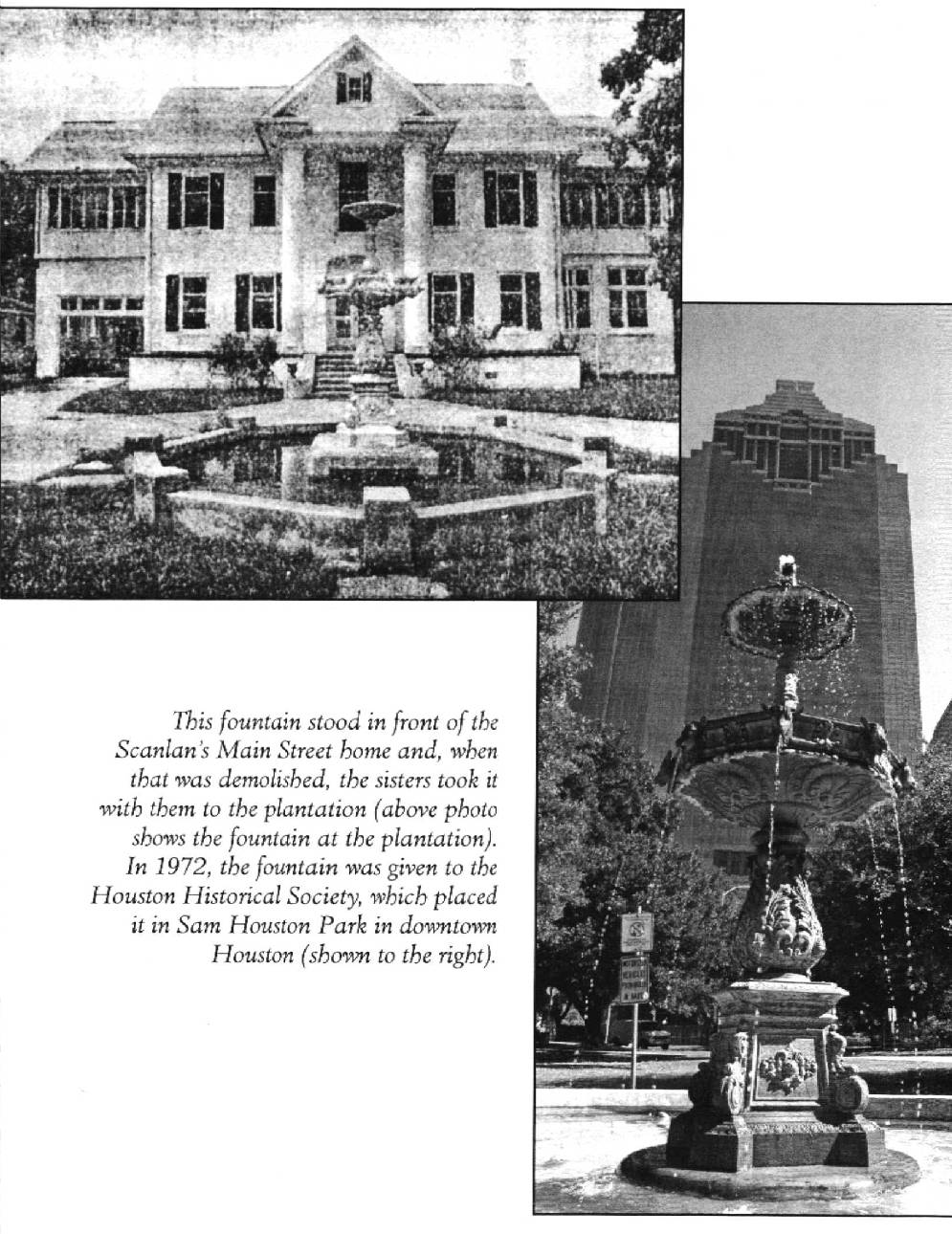
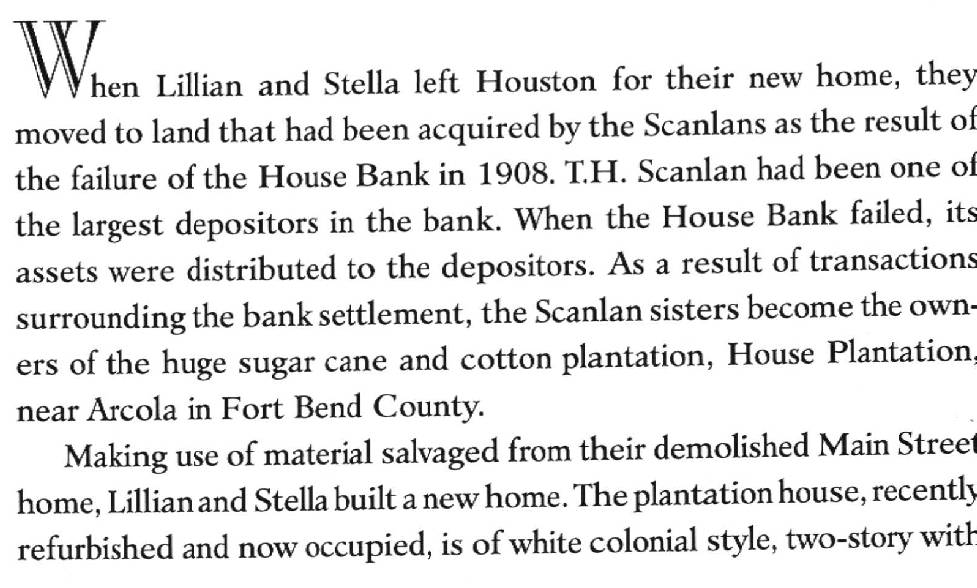
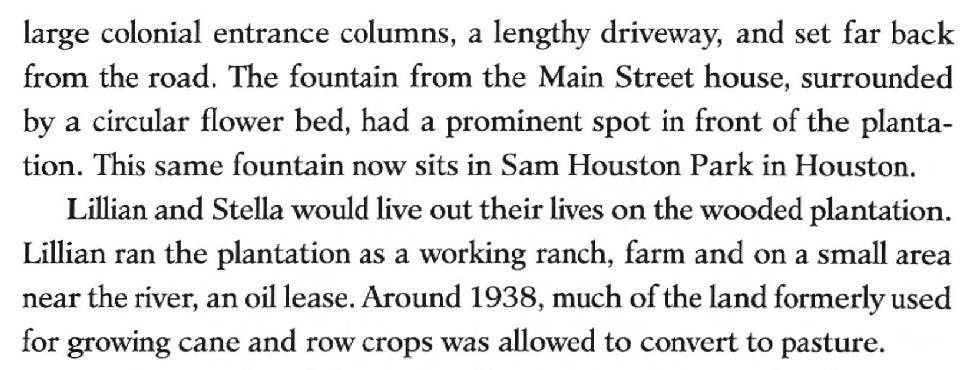
For years the story of the Scanlan Plantation House, in Fort Bend County, was that it was moved from 1917 Main Street in Houston to the plantation. This may have seemed possible until the photo of the 1917 structure became available by the Internet. Any photo of the 1917 house would only be found in books and that was rare. The house was dismantled in 1937 by the Scanlan sisters who were quite reclusive. It should be clear by comparing the photos of the two houses shown above that they are not similar structures.
ITEMS THAT WERE INSTALLED FROM 1917 MAIN STREET, HOUSTON THAT ARE VISABLE OUTSIDE THE SCANLAN PLANTATION HOUSE
The roofing material was reused.
The brick siding was cleaned and installed around the plantation house.
The fountain was installed in front of the house.
The front steps [seven steps] of the 1917 house were reused at the plantation house.

The wrought iron fence around the yard at 1917 Main was incorperated into the brick/wrought iron fence build along Scanlan Road in front of the plantation house.
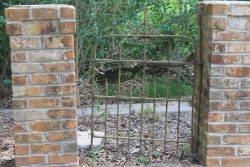
An ornament seen on the steeple of 1917 Main is at the plantation.
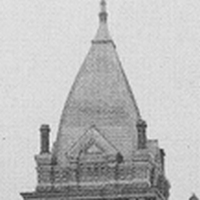
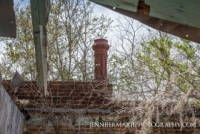
The name on the gate of the Scanlan drive.
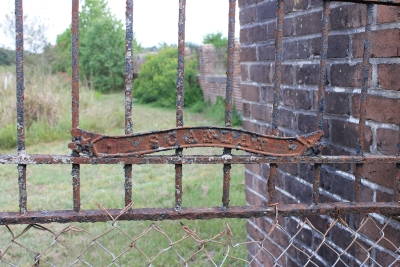
There was not electricity to this location, so two newly designed GM Diesel engines were installed in a brick building away from the house. 1937 was the first year of manufacturing for the GM Diesel engines. Installed at the house was one, a 2-71 [2 cylinder 71 cu inches per cylinder] and also, a 3-71 [3 cylinder 71 cu inches per cylinder]. These engines were two stroke and required a small blower to purge the cylinders between strokes. Because these engines were stationary the fuel was not diesel but butaine, a cleaner burning fuel. The 2 cylinder was direct drive to a 10 KW generator. The 3 cylinder was a 4 belt drive to a 20 KW generator. This equipment and the electrical control panel is still present today.
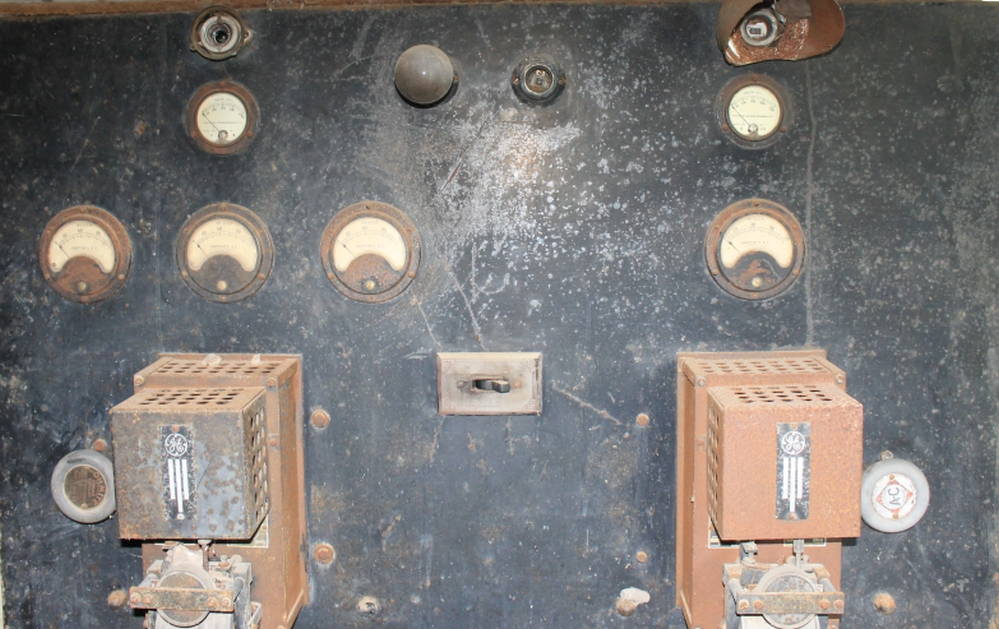
Generator Control Panel
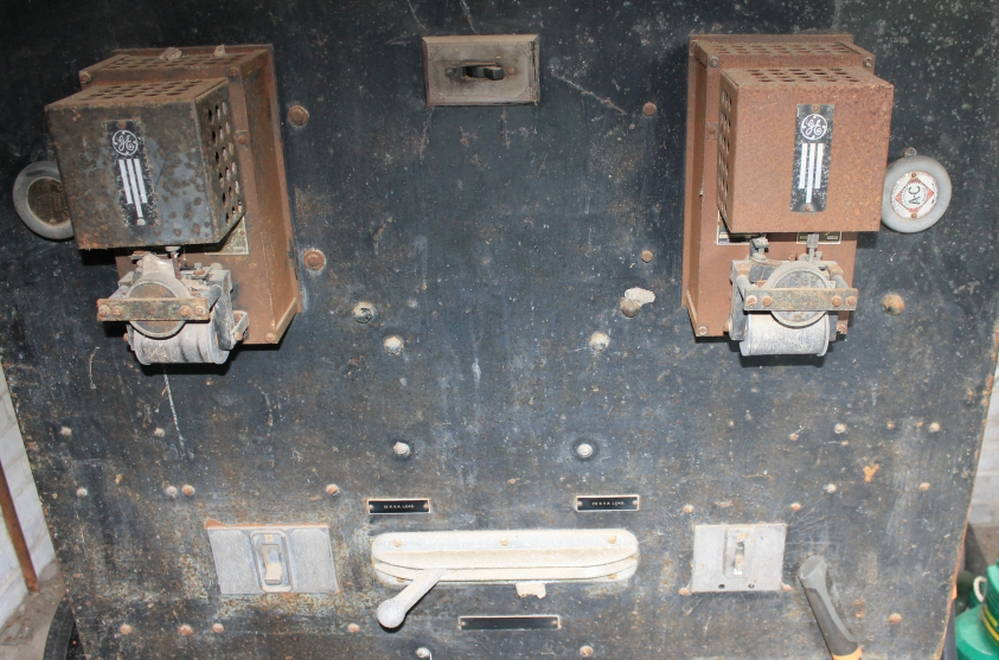
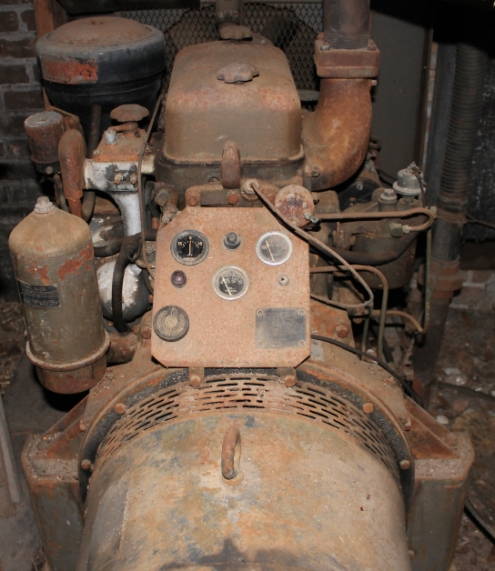
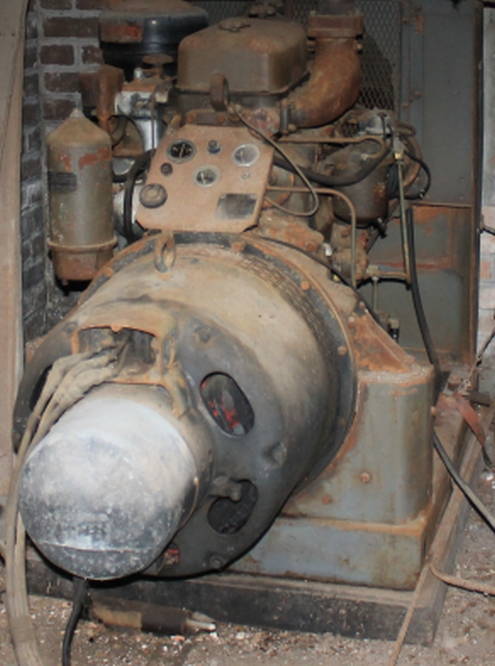
10 KW Generator
powered by 2 cylinder GM diesel [above]
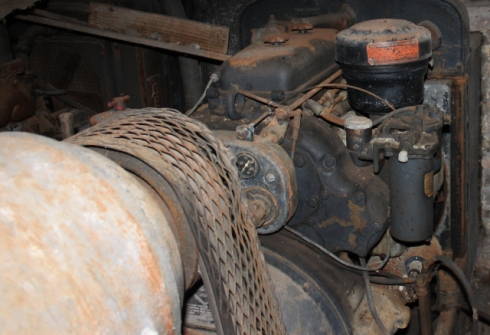
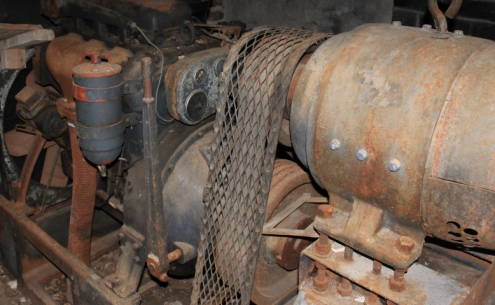
20 KW Generator
powered by 3 cylinder GM diesel [above]
CLICK HERE TO SEE THE INTERIOR OF THE HOUSE
In 1872, T. W. House, a former mayor of Houston (during the Civil War), purchased what had once been the Water's Plantation from Thomas Pierce. He ran the plantation, producing sugar of high quality. In 1913, T.H. Scanlan, another former mayor of Houston purchased the plantation. Scanlan made his fortune in the mercantile and real estate business, which his seven daughters inherited upon his death. After a dispute in 1937 over the loss of a landmark oak tree at the front of their home at 1917 Main street in downtown Houston the remaining Scanlan sisters had their mansion dismantled and rebuilt on the plantation. They used materials from the mansion to double the size of the original foreman's residence on the plantation, which had been built around 1859. The reclusive Scanlan sisters lived in the rebuilt mansion on the plantation from 1937 until their deaths in 1947 and 1950.
Having no direct heirs, the sisters formed the Scanlan Foundation, a charitable trust benefiting Catholic charities. During the 1950's and 60's, the Catholic Diocese of Houston used the plantation, and the area was known as the Cenacle Retreat. The Cenacle, a religious retreat originally established for women only, operated at Sienna from the early 1950's until 1972. The bell once used on the plantation to call the workers to dinner and to sound fire alarms was used during these years to call sisters to prayer. The Cenacle Chapel was behind the 'mansion'. Also there, was a dormitory where the sisters stayed.
This is a photo taken on 9-12-1959 of the Sisters of the Cenacle and Mona Moyle Fenn. (Mona had taken her religious instruction in the Catholic faith from the Sisters, and she and her mother had been baptized in their little chapel. Mona could not receive permission to be married in the little chapel. Nor could she be married in the other Catholic church on the plantation, the little mission operated by the Basilian Fathers of Sugar Land, which was on another area of the plantation. She could not be married in either of these because she lived at Rosharon, thus making Angleton her official parish. So, she was married in the Catholic church in Angleton. After the wedding, she and Joe went to see the Sisters, and Joe took this photo.)
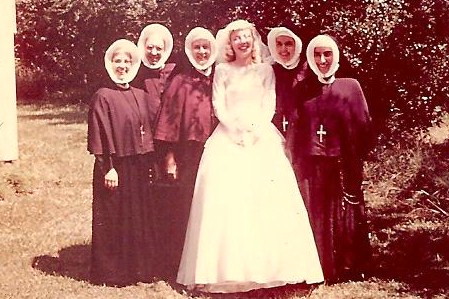
Sacred Heart Church, originally in Arcola and now in Manvel, for many years was a mission of St. Theresa Church in Sugar Land.
The following was built to the west of the house during the time the Catholic Nuns lived here [1950's]. This bench faces west over a shallow lake and has a great view of the setting sun. The Nuns would rest here to meditate.
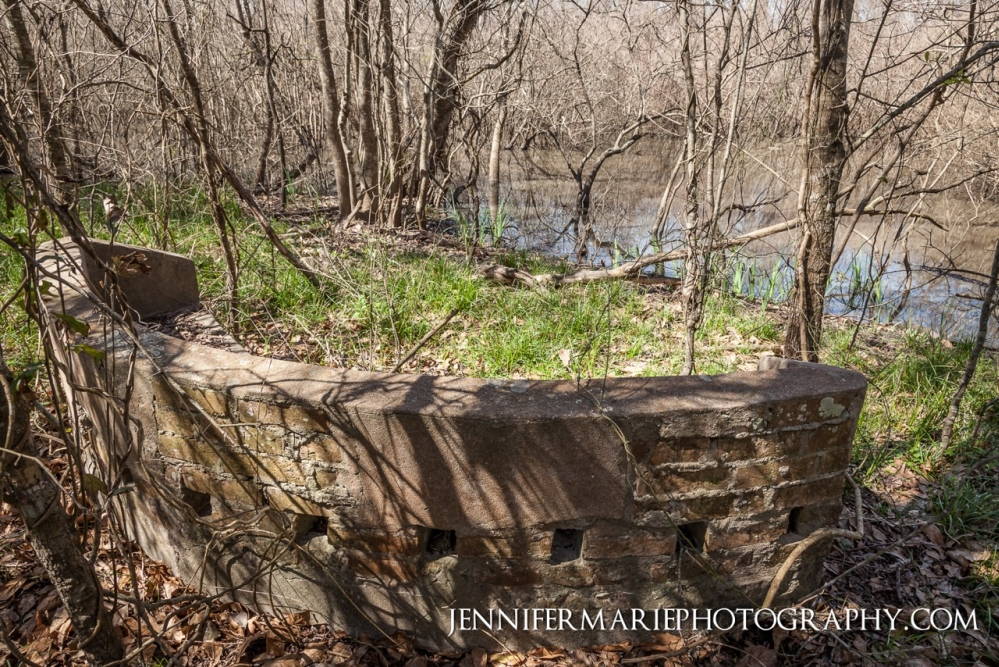
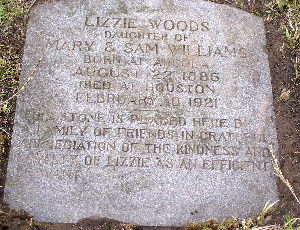
The number 26832 on JIM ELMER's tombstone is his prisoner number
GALVESTON DAILY NEWS JUNE 27, 1885

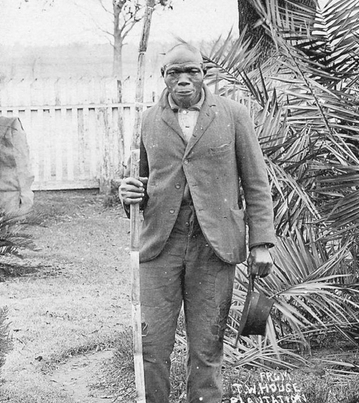
J. R. Fenn ran the plantation for T. W. House during the time House owned it. The photo above is prison trustee Merrick Boyce. The Texas Prison System leased their prisoners to the Sugar Land Sugar Company who would sub lease the prisoners to various plantations. The prisoner lease program was a source for labor from 1867 to 1913.